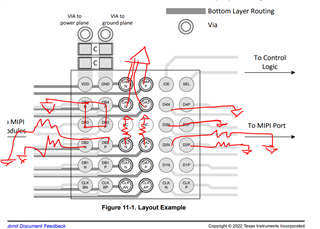Other Parts Discussed in Thread: TMUX1574, TMUX136
Hello,
On the datasheet, it recommends tying every unused signal pin to 50 Ohm resistor to GND. However, I was wondering if it is possible to just have them tied directly to GND to reduce component usage.
Best.


